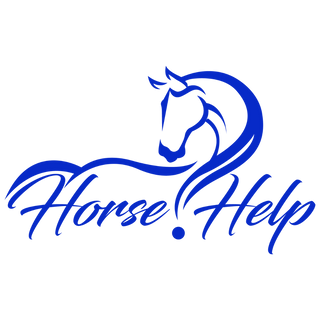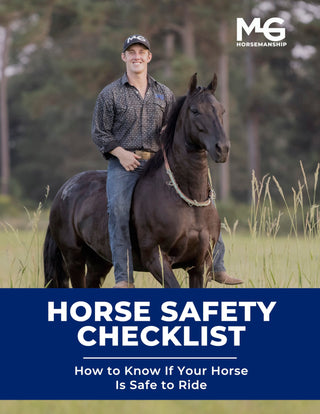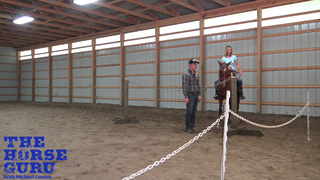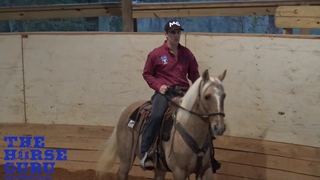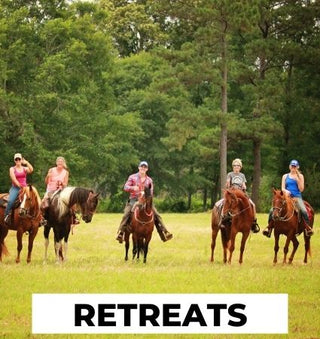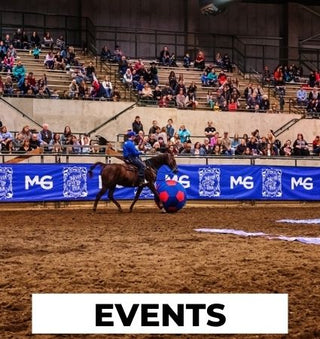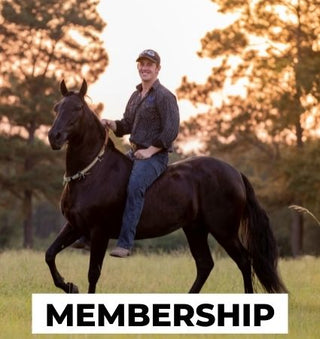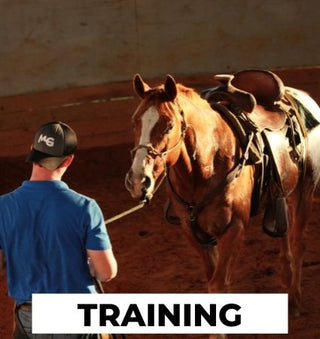Watch the Video Here or continue reading below!
At the Micanopy B Clinic in Florida, Michael Gascon worked with Brittany and her Paso Fino horse, Flip. A year prior, Flip was a nervous, hyper horse who couldn't even handle kindergarten-level exercises. Through dedicated groundwork—starting with basic halter work and progressing through riding fundamentals—Flip has become a calm and cooperative partner.
Today, we'll explore how to train your gaited horse to successfully transition between walk, trot, and canter without losing their natural gait or creating confusion.
Why Cantering a Gaited Horse is Important (and Safe!)
Debunking the Myth: Will Cantering Ruin My Horse’s Gait?
One common myth in the gaited horse world is that teaching a gaited horse to canter will ruin their smooth gait. This simply isn't true. Problems only arise when transitions are rushed or unclear. If a horse gates at 12 mph and is immediately kicked into a canter without clear communication, the horse may start anticipating the canter at lower speeds, which can disrupt the smooth gait.
Solution:
To avoid confusion, you must clearly separate the gaiting frame from the cantering frame:
-
Gait: Horse should stay collected, rear end underneath, driving into the bridle.
-
Canter: Horse should be completely released from the frame, head dropped, moving freely like a Quarter Horse.
Setting Your Horse Up for Success
Tools and Techniques to Encourage Calm Transitions
When working with Flip, we used a snaffle with shanks—a level two reining-style bit. The focus was on dropping his head and releasing pressure.
Key Steps:
-
Teach vertical flexion (lowering the nose toward the chest) from a light touch on the reins.
-
Maintain a horizontal frame (pole, withers, and hindquarters level) through walk, trot, and canter.
-
Work with loose reins to create clarity and reward correct behavior instantly.
Step-By-Step: Teaching Walk, Trot, and Canter Transitions
1. Flex and Release at the Walk
Begin at the walk, staying completely relaxed. Use give and go flexing:
-
Gently flex your horse’s head side to side at the point of the shoulder.
-
Release immediately when the horse drops their head.
-
Prioritize head position over speed.
Goal: Keep the horse’s poll below the withers while walking.
2. Transitioning to the Trot
Once the horse maintains a relaxed head carriage at the walk:
-
Add energy to transition into the trot without allowing the head to rise.
-
Focus on relaxation first, then rhythm and tempo.
Important:
If the horse raises its head during the transition, flex and release again until they relax at the new gait.
3. Developing the Canter
The goal is a natural, relaxed canter without forcing it:
-
Continue to sit deep and relaxed.
-
Drive the horse forward gently with your body and legs.
-
Reward the horse heavily with loose reins when they step into the canter calmly.
Tip:
Spiral exercises and backing help reinforce softness and encourage better flexion through all transitions.
Common Challenges and How to Solve Them
High-headedness and Resistance
Many gaited horses, especially those with show-ring backgrounds, have been conditioned to lift their heads and resist when asked to move. To correct this:
-
Consistently ask for head lowering before adding speed.
-
Never let a horse pick up speed without maintaining a soft, low head.
Bunny Hop Canter?
High energy and tight frames cause the infamous “bunny hop” canter in gaited horses. By focusing on relaxation and softness, you teach your horse to canter naturally without bouncing or breaking gait.
Long-Term Success: Conditioning, Not Breeding
Building a Walk, Trot, and Canter Like a Reiner
Many riders think only specific breeds can achieve that “Western Pleasure” look. In reality, it’s all about conditioning and consistency, not genetics.
Through a combination of flexion work, head-down training, and lots of release:
-
Gaited horses like Pasos, Tennessee Walkers, and Fox Trotters can learn to walk, trot, and canter quietly.
-
Horses learn that a loose rein means stay relaxed, not speed up.
Conclusion: Calm, Clear, Consistent Training Wins
Flip’s progress is proof that any horse, even a once hyper, unmanageable one, can be transformed through patient, methodical training. Walk, trot, and canter transitions aren't just for stock horses; gaited horses can master them too—if we take the time to teach them correctly.
